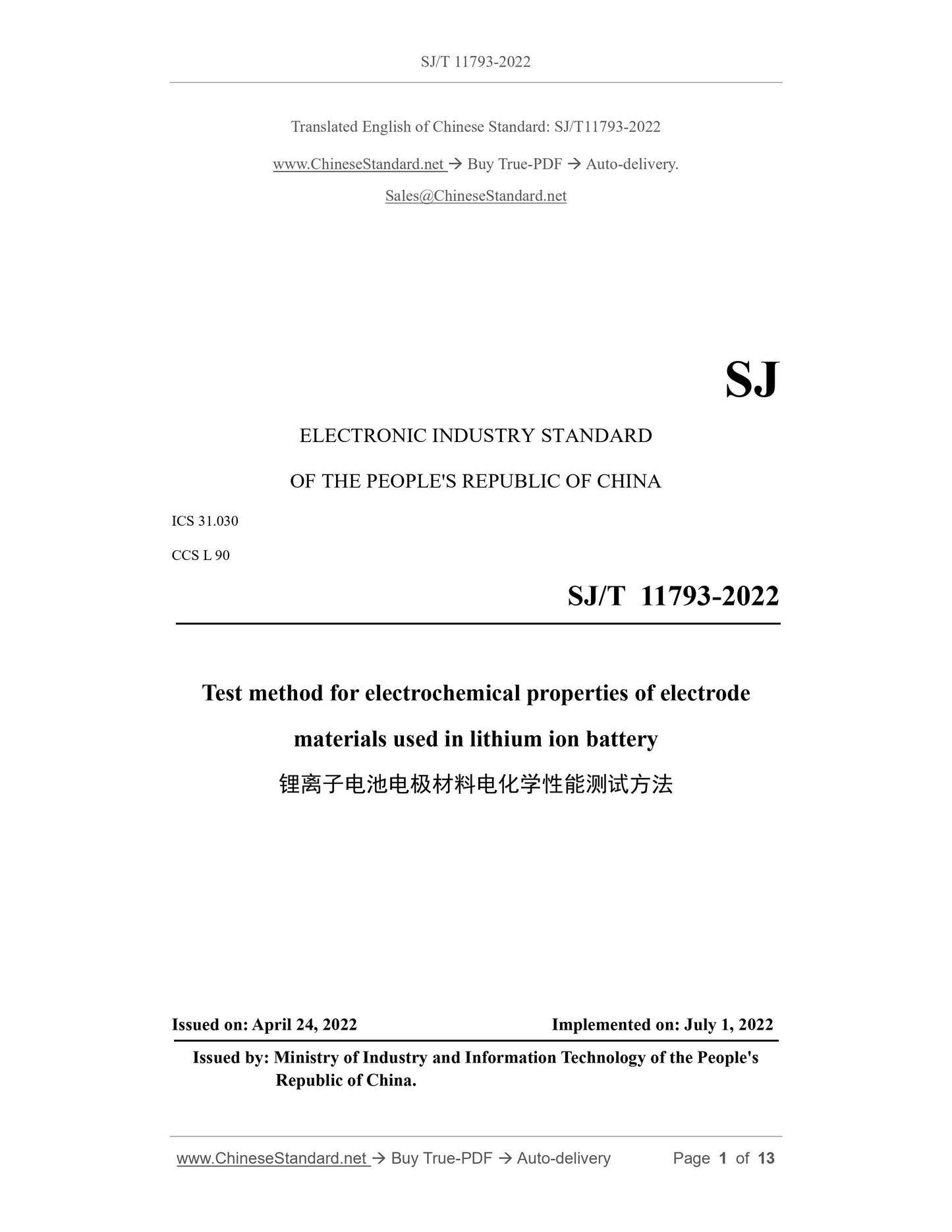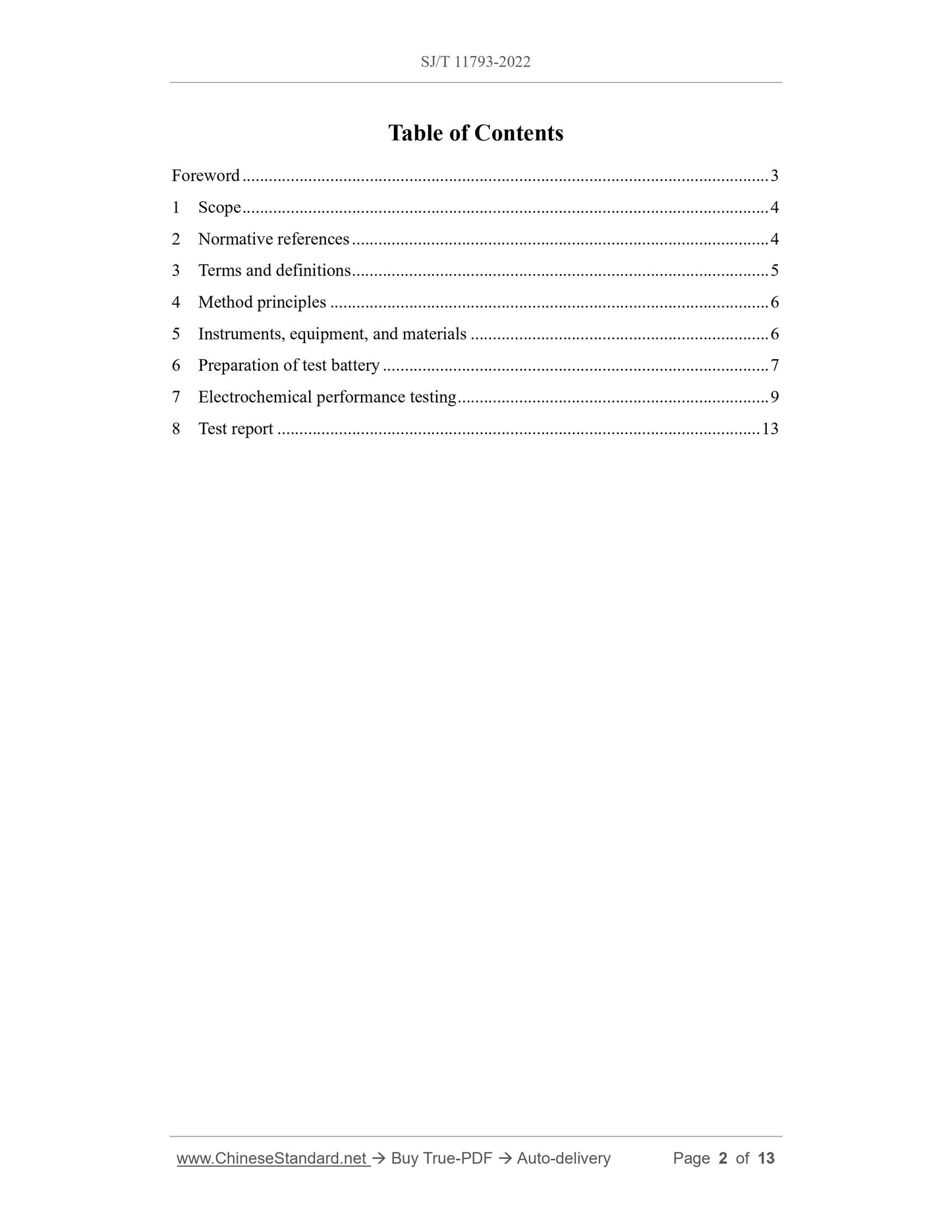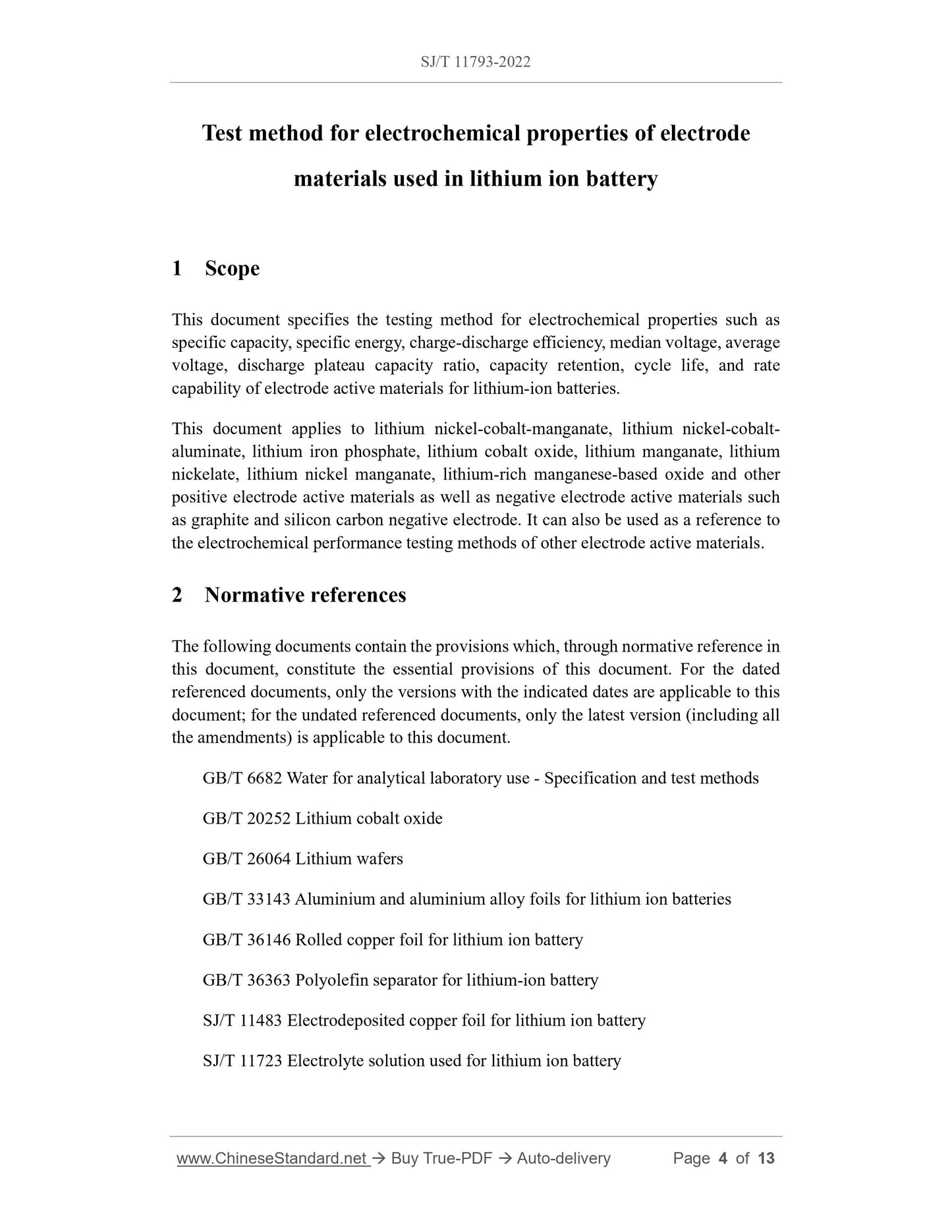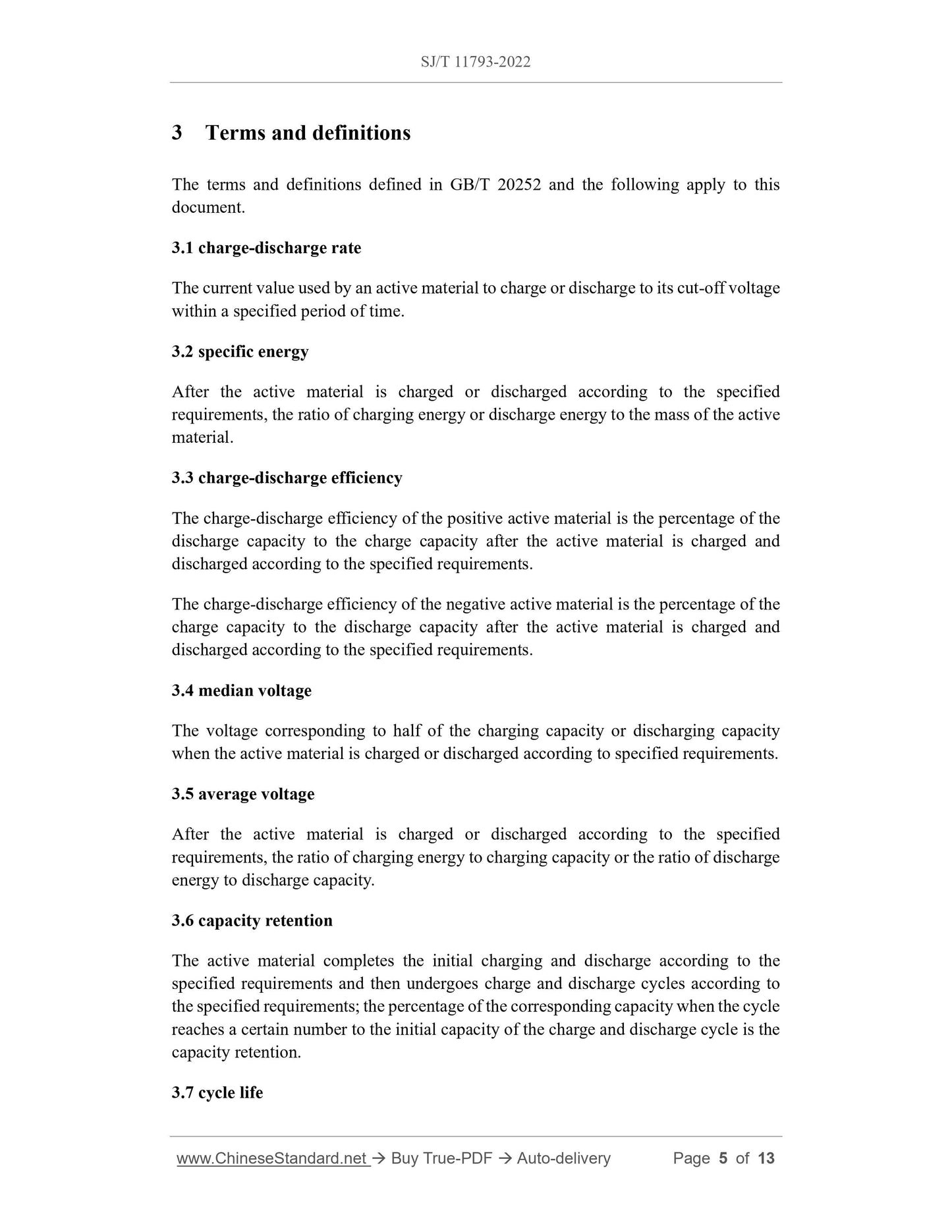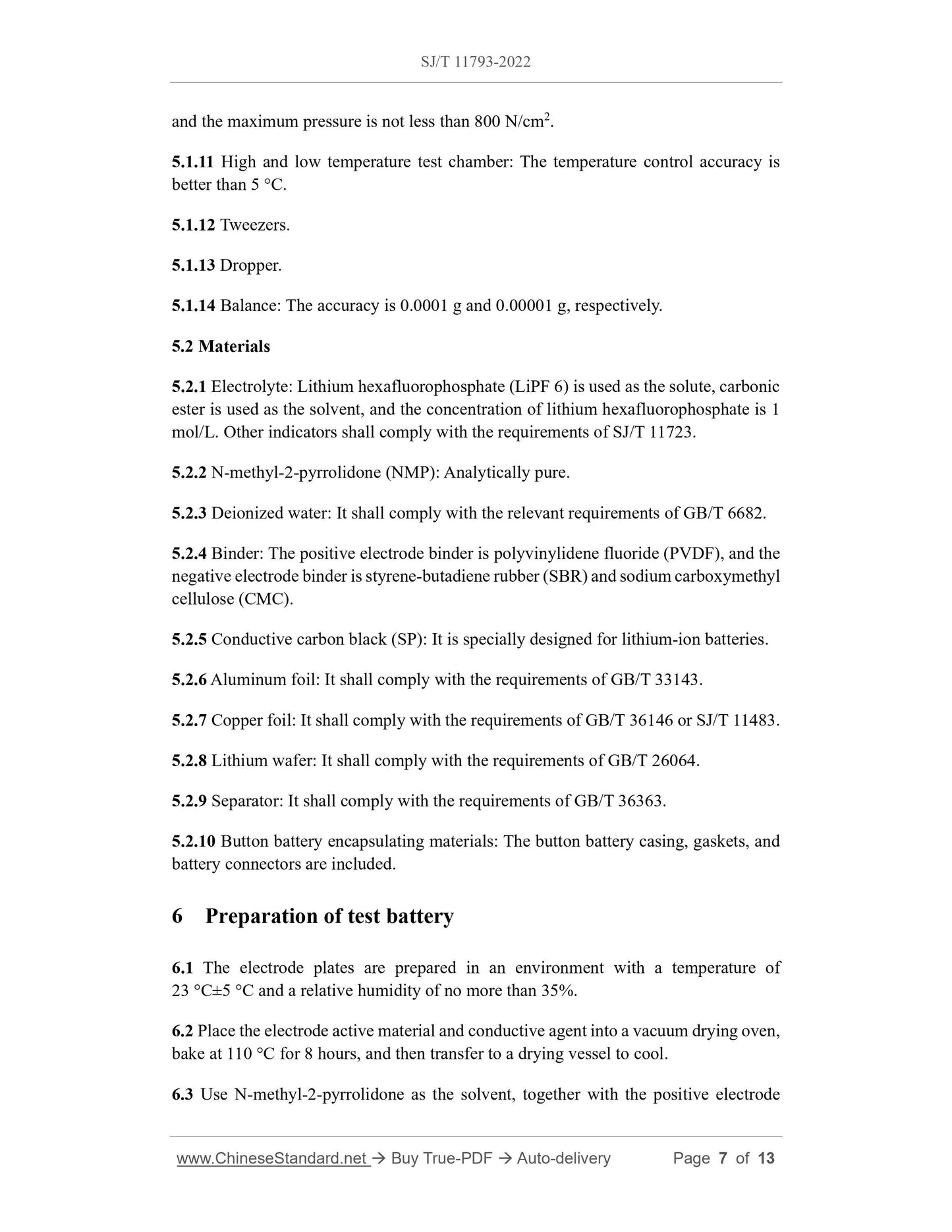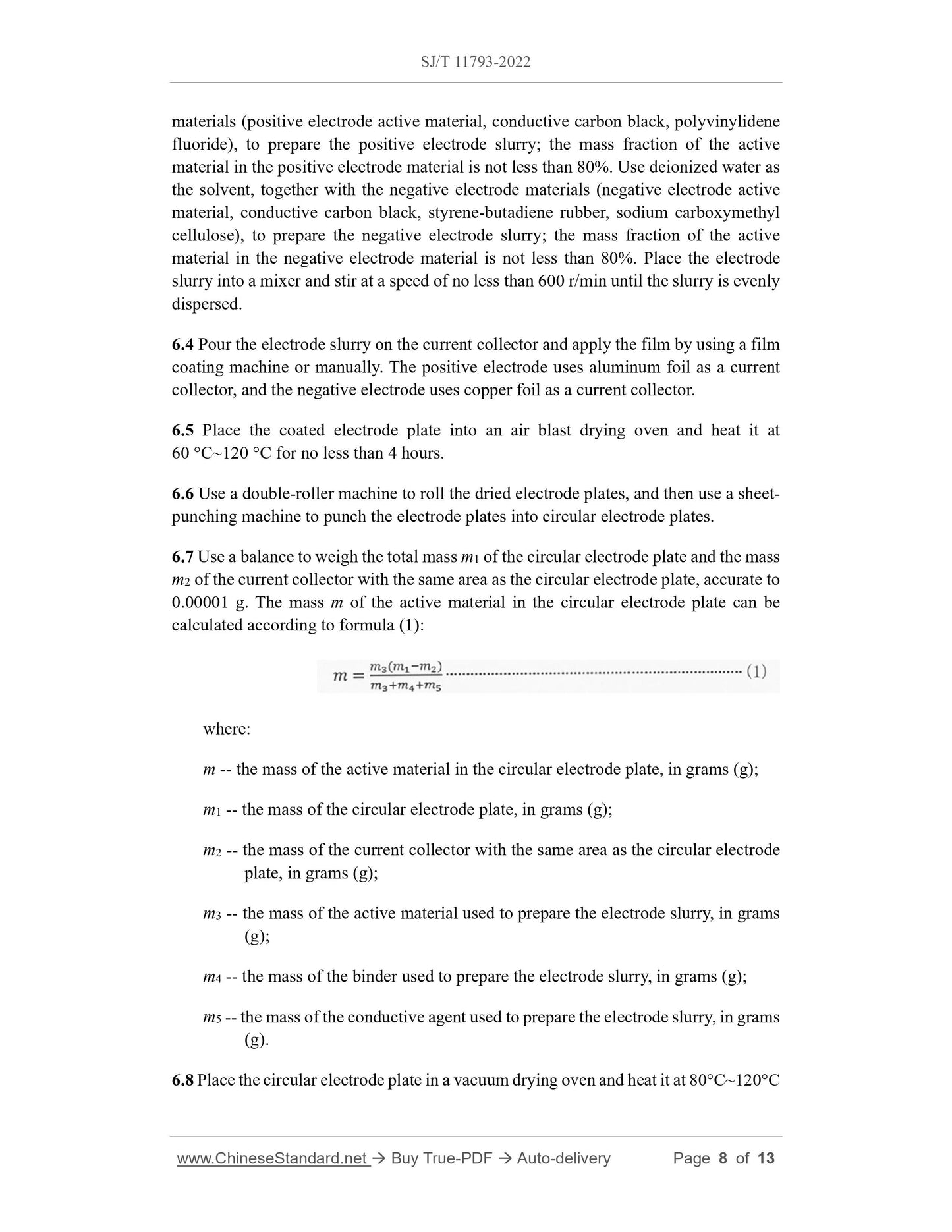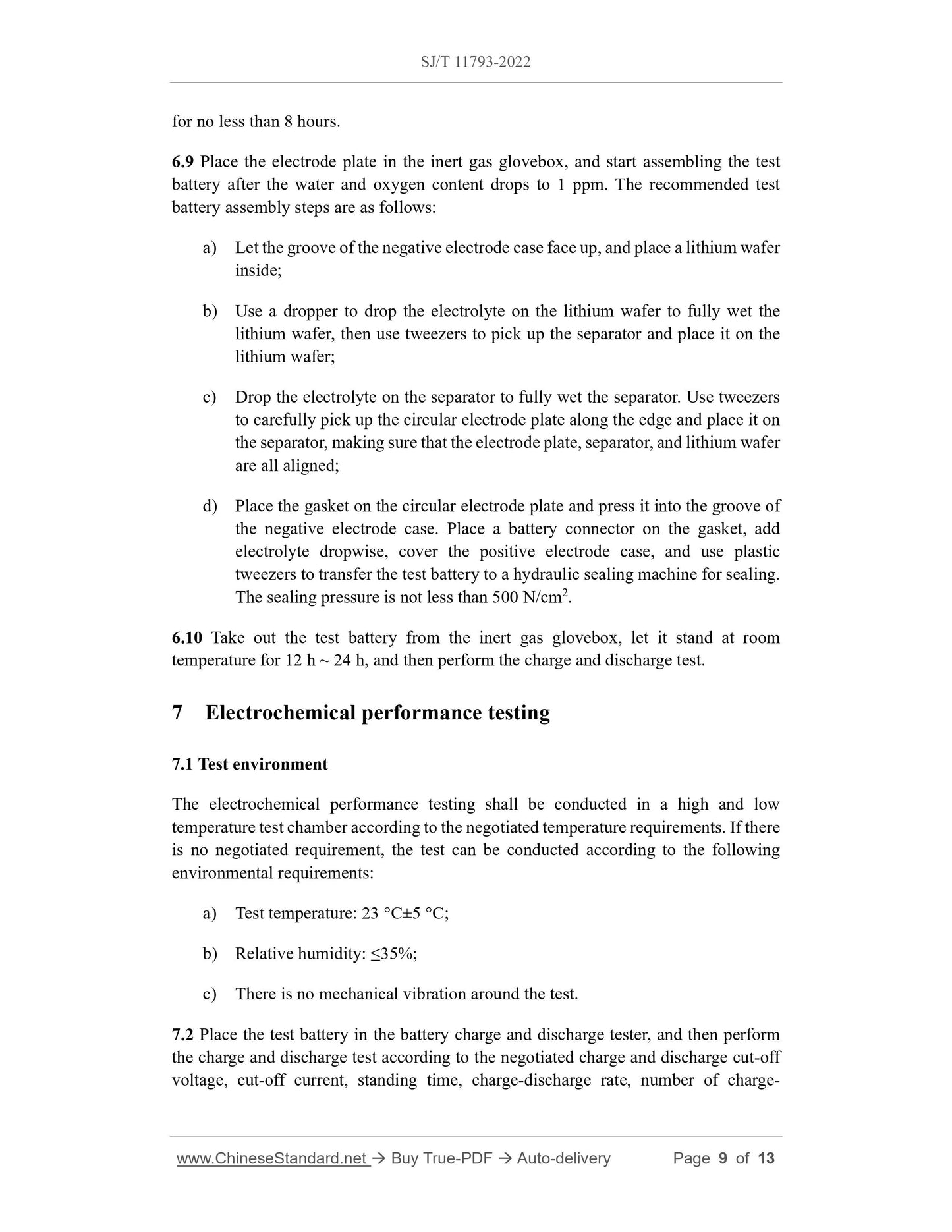1
/
of
7
www.ChineseStandard.us -- Field Test Asia Pte. Ltd.
SJ/T 11793-2022 English PDF (SJ/T11793-2022)
SJ/T 11793-2022 English PDF (SJ/T11793-2022)
Regular price
$195.00
Regular price
Sale price
$195.00
Unit price
/
per
Shipping calculated at checkout.
Couldn't load pickup availability
SJ/T 11793-2022: Test method for electrochemical properties of electrode materials used in lithium ion battery
Delivery: 9 seconds. Download (and Email) true-PDF + Invoice.Get Quotation: Click SJ/T 11793-2022 (Self-service in 1-minute)
Newer / historical versions: SJ/T 11793-2022
Preview True-PDF
Scope
This document specifies the testing method for electrochemical properties such asspecific capacity, specific energy, charge-discharge efficiency, median voltage, average
voltage, discharge plateau capacity ratio, capacity retention, cycle life, and rate
capability of electrode active materials for lithium-ion batteries.
This document applies to lithium nickel-cobalt-manganate, lithium nickel-cobalt-
aluminate, lithium iron phosphate, lithium cobalt oxide, lithium manganate, lithium
nickelate, lithium nickel manganate, lithium-rich manganese-based oxide and other
positive electrode active materials as well as negative electrode active materials such
as graphite and silicon carbon negative electrode. It can also be used as a reference to
the electrochemical performance testing methods of other electrode active materials.
Basic Data
| Standard ID | SJ/T 11793-2022 (SJ/T11793-2022) |
| Description (Translated English) | Test method for electrochemical properties of electrode materials used in lithium ion battery |
| Sector / Industry | Electronics Industry Standard (Recommended) |
| Classification of Chinese Standard | L90 |
| Word Count Estimation | 8,852 |
| Date of Issue | 2022-04-08 |
| Date of Implementation | 2022-07-01 |
| Issuing agency(ies) | Ministry of Industry and Information Technology |
| Summary | This standard specifies the specific capacity, specific energy, charge-discharge efficiency, median voltage, average voltage, discharge platform capacity ratio, cycle capacity retention rate, cycle life, rate performance and other electrochemical performance tests of electrode active materials for lithium-ion batteries. method. |
Share
